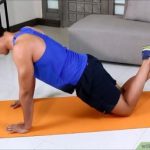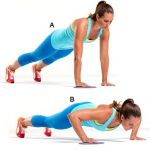What is HIIT?
High Intensity Interval Training, or HIIT, is a type of training that has become rather popular for many people in the fitness crowd. In this particular type of training you perform High Intensity workouts at specific timed intervals. Some of these timed intervals could be for 30 seconds or even 1 minute of all out effort with little to no breaks in between. HIIT training has been very successful in various areas because you are able to get a great workout in a short amount of time. Although it is not necessarily recommended to use HIIT training as the only source of physical activity, it is a great way to obtain a workout quickly an effectively.
Possible Cardio HIIT Workouts
One possible cardio workout program that you may be able to attain fairly easily throughout the week could be running full out sprints for a designated amount of time. this could be 8 to 12 all out sprints for 30 seconds at a time. After each sprint you would be given 2 minutes to recover before the next 30 second sprint.
Another simple and effective way to take advantage of this could be on a bike at home or at the UCO Wellness Center. For example, pedaling for 60 seconds straight for 8 to 12 sets at a high intensity while giving yourself a 1 minute and 30 second break in between each set of 60 seconds. Notice that in this particular type of workout the resting duration is slightly shorter. This can make it a little more challenging if you are interested in doing so or want to mix it up from the normal routine.
HIIT is Not the Only Way!
Although HIIT training has been proven to be fairly effective in many cases there are still ways in which you can workout and gain results without going 100 miles an hour all the time. Running consistently throughout the week, mixing in some resistance training, or even body weight workouts are also great ways to work towards the results that you would like to see.
Have a great week!
Information:
Astorino, Todd A., Ross M. Edmunds, Amy Clark, Leesa King, Rachael Gallant, Samantha Namm, Anthony Fischer, and Kimi Wood. “High-Intensity Interval Training Increases Cardiac Output and V˙O2max.” Medicine & Science in Sports & Exercise 49.2 (2017): 265-73. Web.



